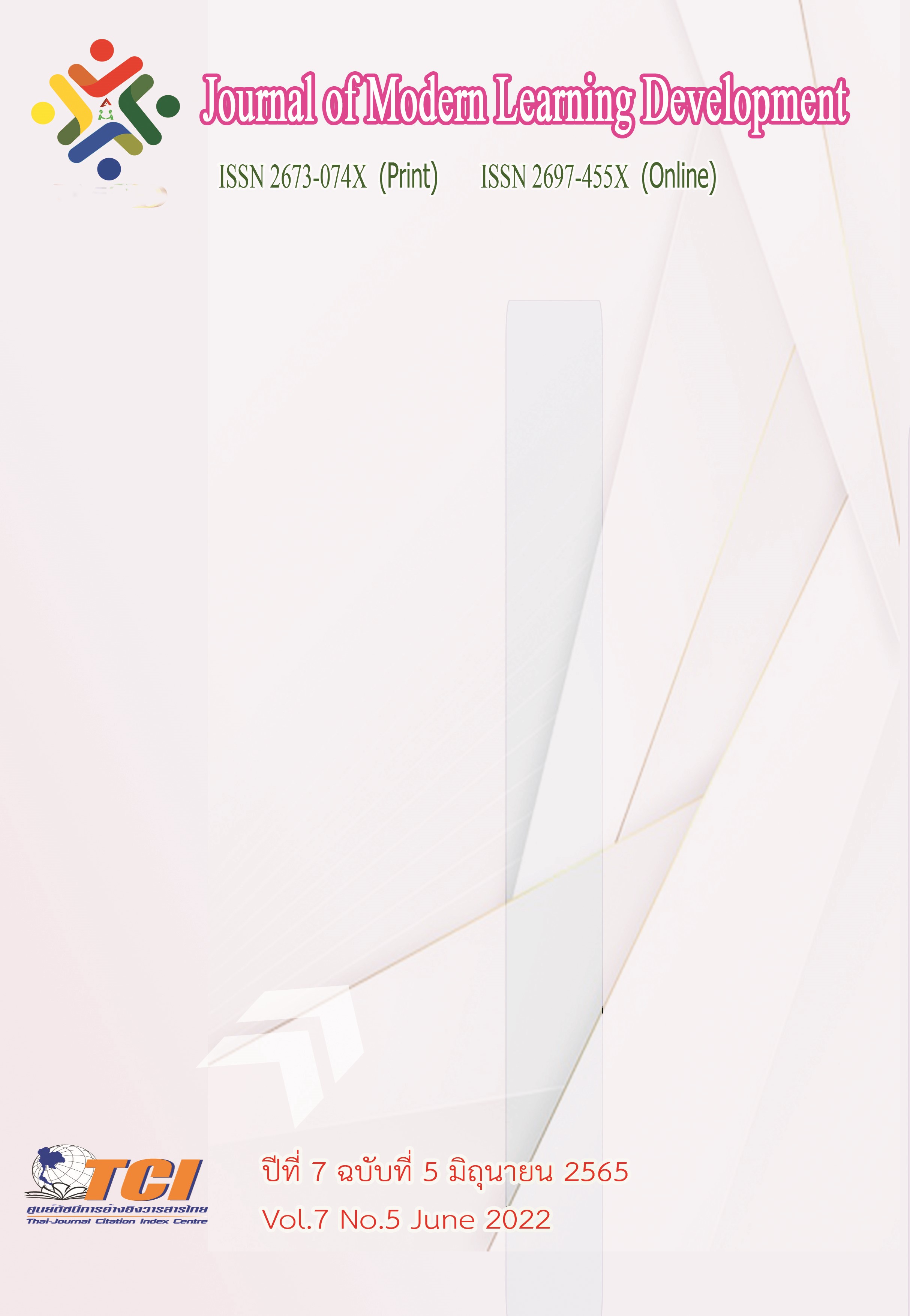Developing Reading Comprehension Skills of Secondary 3 Students by Using Computer Assisted Instruction Lessons with Constructivist Theory
Main Article Content
Abstract
The objectives of this research were 1) develop computer-assisted instruction in Thai language group on reading comprehension together with constructivist theory of secondary 3 students who are effective according to the criteria 80/80 2)compare the students academic achievement before and after learning 3) study the tasks score that student create of learning with the computer assisted instruction lessons. The samples used in this study are secondary 3 students at Muang Sawankhalok Municipal Secondary school in the second semester of Academic year 2564, a total of 41 people from the choose a specific. Equipment used in the study include 1) the computer-assisted instruction on reading comprehension together with constructivist theory 2) the academic achievement test 3) teaching plan of computer-assisted instruction on reading comprehension together with constructivist theory 4) the satisfaction questionnaire.
The result found that 1) The performance of the computer-assisted instruction on reading comprehension together with constructivist theory the efficiency is 83.02/80.16 percent 2) The students academic achievement after learning with computer-assisted instruction was statistically significantly higher than before at the .05 level. 3) Satisfaction of students learning with computer-assisted instruction was at the highest level.
Article Details
References
กรรณิการ์ หาญพิทักษ์. (2559). ผลการจัดกิจกรรมการเรียนรู้ตามทฤษฎีคอนสตรัคติวิสต์ ที่มีต่อมโนทัศน์และความสามารถในการแก้ปัญหาทางคณิตศาสตร์ เรื่อง รูปสามเหลี่ยม ของนักเรียนชั้นประถมศึกษาปีที่ 5. วิทยานิพนธ์ กศ.ม., บัณฑิตวิทยาลัย: มหาวิทยาลัยบูรพา.
ชัยยงค์ พรหมวงศ์. (2556). การทดสอบประสิทธิภาพสื่อหรือชุดการสอน. วารสารศิลปากร ศึกษาศาสตร์วิจัย
(1), 7–20.
นาทพงษ์ หนูสวัสดิ์. (2560). พัฒนาการรู้เรื่องการอ่านอย่างไรให้สำเร็จ. วารสารครุศาสตร์. 45 (3), 252 –263.
บุญเลี้ยง ทุมทอง. (2556). ทฤษฎีและการพัฒนารูปแบบการจัดการเรียนรู้. กรุงเทพมหานคร: เอสพริ้นติ้งไทยแฟคตอรี่.
ปรียาภรณ์ แสงปัญญา. (2561). ผลการใช้บทเรียนคอมพิวเตอร์ช่วยสอน เรื่อง การอ่านจับใจความสำคัญโดยใช้ทฤษฎีการสร้างองค์ความรู้ด้วยตนเองสำหรับนักเรียนชั้นมัธยมศึกษาปีที่ 3. วิทยานิพนธ์ ศษ.ม., บัณฑิตวิทยาลัย: มหาวิทยาลัยราชภัฏบุรีรัมย์.
พรสวรรค์ สีป้อ. (2550). สุดยอดวิธีสอนภาษาอังกฤษนำไปสู่การจัดการเรียนรู้ของครูยุคใหม่. กรุงเทพมหานคร: อักษรเจริญทัศน์.
พัชรี ใจโต. (2558). การพัฒนาบทเรียนคอมพิวเตอร์ช่วยสอนแบบเกมด้วยเทคนิคช่วยจำ เรื่อง ชนิดของคำในภาษาไทย สำหรับนักเรียนชั้นมัธยมศึกษาปีที่ 1. การค้นคว้าอิสระ ศษ.ม., บัณฑิตวิทยาลัย: มหาวิทยาลัยศิลปากร.
เวชฤทธิ์ อังกนะภัทรขจร. (2555). ครบเครื่องเรื่องควรรู้สำหรับครูคณิตศาสตร์: หลักสูตรการสอนและการวิจัย. กรุงเทพมหานคร: จรัสสนิทวงศ์การพิมพ์.
อนุชา คะชาชัย. (2554). การพัฒนาบทเรียนคอมพิวเตอร์มัลติมีเดียตามแนวคิดคอนสตรัคติวิสต์วิชาวิทยาศาสตร์ เรื่องระบบต่าง ๆ ในร่างกายสำหรับนักเรียนชั้นประถมศึกษาปีที่ 6 โรงเรียนวัดอู่ตะเภา. วารสารอิเล็กทรอนิกส์ (Veridian E -Journal) บัณฑิตวิทยาลัยมหาวิทยาลัยศิลปากร. 5 (1), 314 - 330.
อัจฉรีย์ (คำแถม) พิมพิบูล. (2550). คอมพิวเตอร์ช่วยสอน. กรุงเทพมหานคร: ซีเอ็ดยูเคชั่น.


